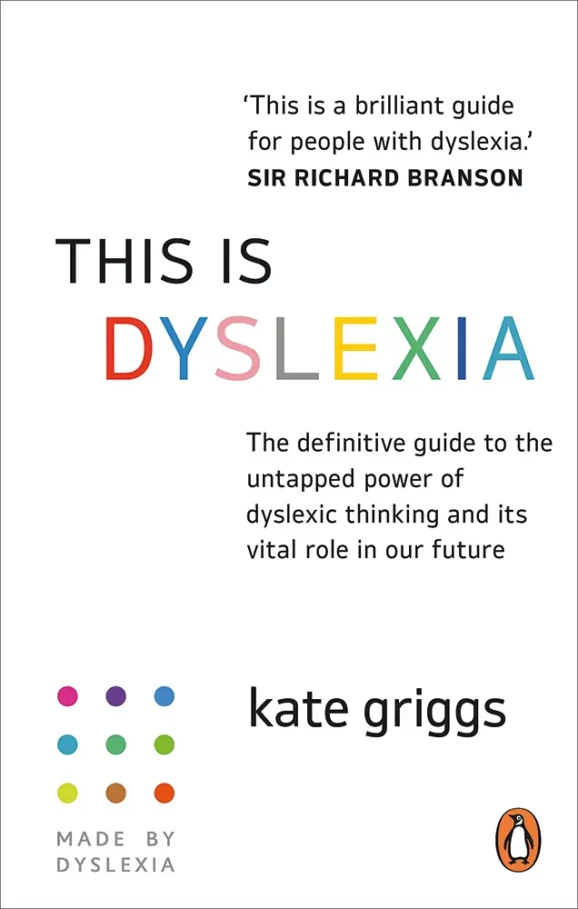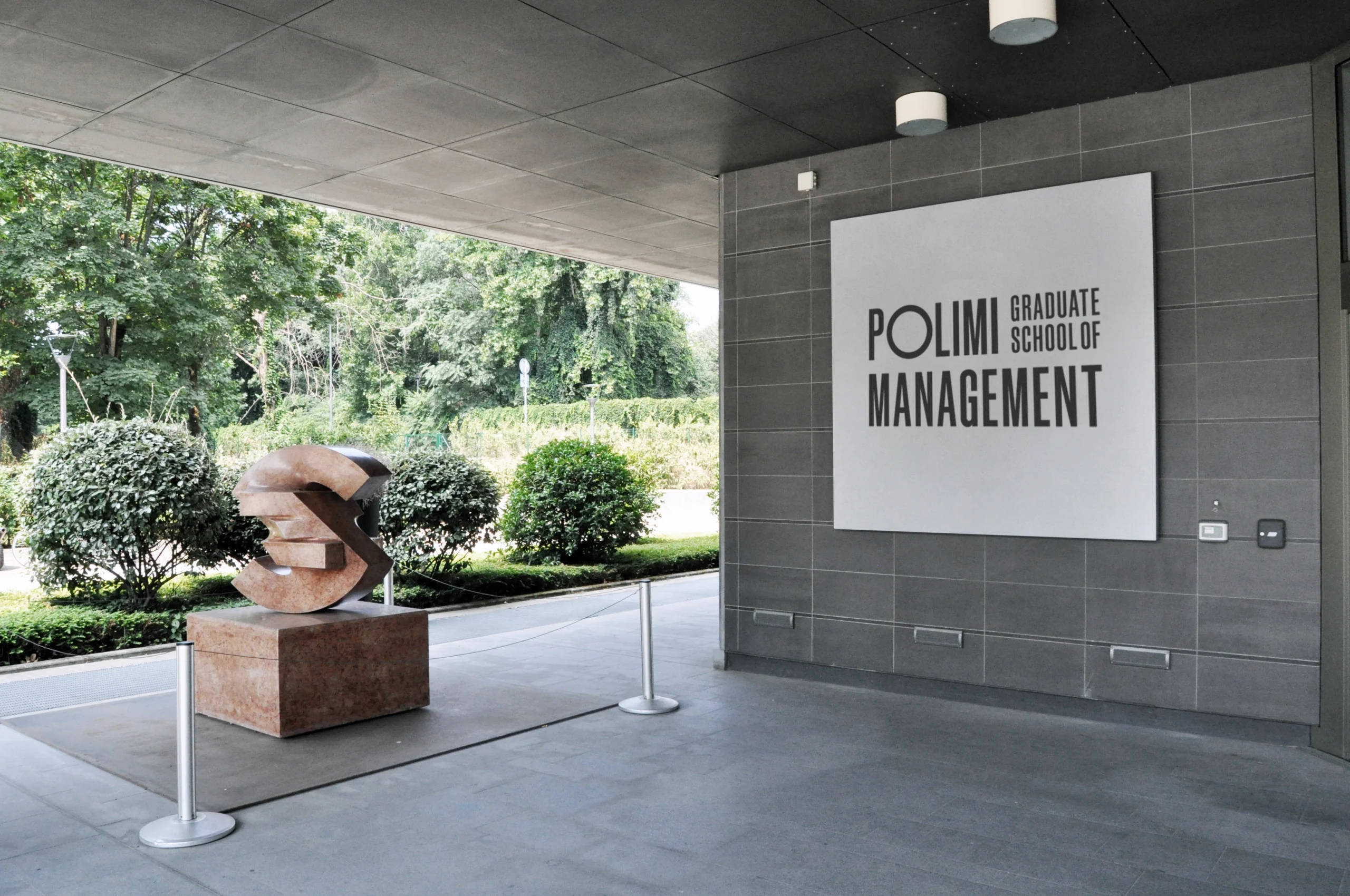Tomorrow’s world needs Dyslexic Thinking

John E. Kaye
- Published
- Diversity, Equality & Inclusion, Executive Education, Home

Founder and CEO of Made By Dyslexia Kate Griggs highlights why understanding dyslexia is vital to navigating the challenges and opportunities presented by AI
Technology such as AI has already transformed the world of work. How organisations adapt to the AI revolution will determine their future success. The World Economic Forum (WEF) predicts that 50% of jobs will be done by machines by 2025 and, according to a report from Asana, 29% of staff tasks are already replaceable by AI. To survive in the workplace of tomorrow, businesses need talent who possess the valuable skills that machines can’t replicate. And there is one pool of talent in particular businesses should look to: Dyslexic Thinkers.
Dyslexic brains are “wired” differently. Our natural curiosity, ability to unconventionally connect the dots and think laterally makes Dyslexic Thinking an asset when it comes to thriving alongside technology. In fact, Dyslexic Thinking skills are an exact match for the WEF’s skills of the future, and the tasks dyslexics find more challenging, like spelling, reading and memorising facts, are already being fulfilled by technology.
It’s time for organisations to truly understand and empower Dyslexic Thinkers in order to thrive alongside AI – or risk being left behind.
Key Dyslexic Thinking skills
The WEF’s ‘Future of Jobs Report’ found the following skills to be the most important for the future of work: creative thinking, analytical thinking, technological literacy, curiosity and life-long learning, and resilience, flexibility and agility. Let’s take a closer look at how these match-up with Dyslexic Thinking skills, which can be broken down into six categories:
Imagining – Dyslexic Thinkers are adept at using their imagining skills to create an original piece of work or give ideas a new spin. In an organisation, dyslexics who excel at imagining drive innovation. They come up with new ideas and approaches that no one else has thought of – because they see the world differently – and this helps to move your business forward. Having Dyslexic Thinkers on your team who can imagine, adapt and create will be vital for businesses to embrace new technologies.
Visualising – Seventy-five per cent of dyslexics are above average at visualising. This means that Dyslexic Thinkers have a unique way of interacting with space, senses, physical ideas and new concepts. Dyslexics who are good at visualising in your organisation may be able to visualise complex user journeys or see project plans come together in their mind. They may excel at product development, visualising how parts fit together, and seeing a challenge from multiple angles in their mind. Or “see” how a business opportunity could be.
Reasoning – Dyslexics are above average at reasoning, which means we are skilled at understanding patterns, evaluating possibilities and making decisions. Dyslexics are brilliant at using their enhanced reasoning skills to make connections across complex issues, see the bigger picture and simplify things. This can help them to be bold, cut through the noise and act fast, capitalising on opportunities and bringing new perspectives to organisations.
Communicating – Dyslexic Thinkers also have brilliant communication skills. They excel at simplifying complex subjects through storytelling, which allows them to convey clear messages, build engaging narratives and sell a vision. Because of this, Dyslexic Thinkers make great leaders, as they can build, support and empower teams, particularly through change and uncertainty.
Connecting – Another skill that sets dyslexics in the workplace apart is their ability to motivate and inspire people. This is born out of our strong connecting skills and heightened emotional intelligence. Being aware of our weaknesses and the need to focus on our strengths gives us a greater understanding of ourselves and others. Dyslexic Thinkers are therefore adept at empathising with others, so they are incredibly valuable when creating collaborative and resilient teams.
Exploring – Dyslexic Thinkers are naturally very curious, which means we are great at exploring ideas. This helps us to spot gaps and opportunities that others may miss, in turn coming up with new approaches to old problems – an advantage in any workplace. Our ability to ask the right questions to get to the heart of an issue means our skills complement AI.

Why AI is the perfect co-pilot to Dyslexic Thinking
While AI can’t replicate these valuable Dyslexic Thinking skills, it can complement them by removing barriers and allowing dyslexics to capitalise on their strengths. Let’s look at how AI and Dyslexic Thinking skills can complement each other in the workplace:
AI simplifies information processing – AI aggregates content super quickly, sifting through huge amounts of information to compile a comprehensive draft to work from. This removes the time-consuming need for dyslexics to read vast amounts of information. As a result, Dyslexic Thinkers can immediately lean into their skills of imagining and visualising with the information that AI has provided, allowing them to innovate more efficiently. In fact, 72% of dyslexics see AI tools, such as ChatGPT, as a valuable tool to apply Dyslexic Thinking and spark innovation.
Dyslexics push AI to give the best information To use AI tools successfully, you need to know what type of questions to ask. Ultimately, the better your prompts, the better AI will perform. This is where Dyslexic Thinking skills like imagining, reasoning and exploring are a huge advantage. Dyslexics are natural questioners and big-picture thinkers. Their ability to approach problems differently, understand patterns and evaluate possibilities is key to assessing a subject and asking interesting, probing questions. This means that Dyslexic Thinkers are particularly skilled at asking questions that push AI to give the best information.
As AI evolves, Dyslexics adapt – Organisations must upskill and reskill their current workforce in order to successfully integrate AI capabilities. This requires teams to willingly embrace change and learn new skills, which is what Dyslexic Thinkers thrive at.
Dyslexic Thinkers are naturally curious and adaptable, making them skilled at embracing the adoption of AI. The Dyslexic Thinking skill of imagining is also key to finding new and innovative ways for everyone to work alongside AI as it evolves in the future. In fact, research found that dyslexics are enthusiastic early adopters of AI, recognising that it is a powerful tool to co-pilot valuable Dyslexic Thinking skills in the workplace.
Future-proofing your organisation with Dyslexic Thinkers
There is no doubt that AI has changed the way we work, and it will continue to do so. In an age when facts can be searched in seconds and spelling can be corrected with the click of a button, it is human creativity, imagination, and intuition that distinguishes us from machines. Dyslexics have these exact skills that organisations need to capitalise on the opportunities that AI presents.
Three out of four dyslexics still hide their dyslexia from their employers due to concerns around the negative perception of dyslexia, according to a Made By Dyslexia/Manpower report. But now is the time for organisations to empower Dyslexic Thinking. Redefining dyslexia as a skill will be crucial for organisations to succeed in the age of AI.


About the author
Kate Griggs is the founder and CEO of the global charity Made By Dyslexia, host of the ‘Lessons in Dyslexic Thinking’ podcast and the author of ‘This is Dyslexia’ (Penguin) and ‘Empowering Dyslexic Thinking at Work’, a free access course on LinkedIn Learning.
Sign up to The European Newsletter
RECENT ARTICLES
-
 ETH Zurich and the University of St.Gallen redefine executive education with emba X, a new model of responsible leadership
ETH Zurich and the University of St.Gallen redefine executive education with emba X, a new model of responsible leadership -
 Why leadership is the strongest defence in South Africa’s schools
Why leadership is the strongest defence in South Africa’s schools -
 Porto Business School launches executive programme on AI strategy
Porto Business School launches executive programme on AI strategy -
 POLIMI Graduate School of Management strengthens global reputation in MBA and master’s rankings
POLIMI Graduate School of Management strengthens global reputation in MBA and master’s rankings -
 Trinity Business School strengthens standing in global MBA rankings
Trinity Business School strengthens standing in global MBA rankings -
 Meet the class of 2025… and their children. Why mid-life university learning is on the rise
Meet the class of 2025… and their children. Why mid-life university learning is on the rise -
 University of Michigan launches executive programme for chief data and AI officers
University of Michigan launches executive programme for chief data and AI officers -
 International education: A vision for global citizens
International education: A vision for global citizens -
 How to create lasting social change? Build a community
How to create lasting social change? Build a community -
 Tomorrow’s world needs Dyslexic Thinking
Tomorrow’s world needs Dyslexic Thinking -
 Why family therapy is the best investment you can ever make
Why family therapy is the best investment you can ever make -
 How EQ can give us the edge over AI
How EQ can give us the edge over AI -
 A true root and branch approach
A true root and branch approach -
 It's fine to say you're not ok
It's fine to say you're not ok -
 Are you willing to change with your organisation?
Are you willing to change with your organisation? -
 Emerging markets: Online learning for women unlocks economic potential
Emerging markets: Online learning for women unlocks economic potential -
 A programme of urgent importance
A programme of urgent importance -
 Why progress is not parity
Why progress is not parity -
 Begin by building trust
Begin by building trust -
 Have we the energy for cryptocurrencies?
Have we the energy for cryptocurrencies? -
 Make your employees everyday data scientists
Make your employees everyday data scientists -
 The power of understanding
The power of understanding -
 Welcome to the team
Welcome to the team -
 Become your best self with Gies
Become your best self with Gies -
 The benefits of seeing the bigger picture
The benefits of seeing the bigger picture


























